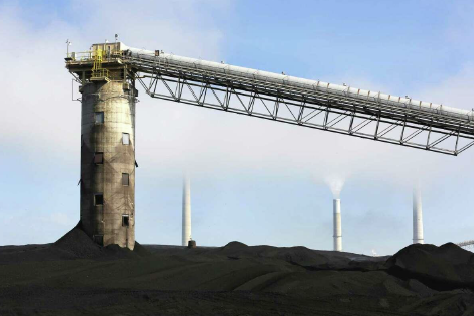Posted on February 10, 2023 by Francine Sanders Romero

CPS energy
This op-ed appeared in the San Antonio Express News by Francine Romero, chair of the Department of Public Administration and vice chair of the CPS Energy board of trustees.
Last month’s vote by CPS Energy’s board of trustees to phase out coal as an energy source in our service area by 2028 combines an evolution in power generation with substantial community benefits.
Although global agreements and national policies are critical, much of the future of climate change will be driven by local actions, and this decision unifies us with other cities moving toward a decarbonized future. Furthermore, it replaces power from aging gas steam units that must be retired, and it avoids the prohibitive cost of retrofitting coal-burning equipment for regulatory compliance.
It was my privilege this past year to serve as board liaison to the Rate Advisory Committee. As the committee worked through its recommendation process for this plan, we all learned a great deal from CPS Energy staff, consultants and one another.
One significant takeaway for me concerned the inherent intricacies and trade-offs of generation planning, some of which is lost in simplified comparisons of the chosen Portfolio 2 and the runner-up, Portfolio 9. Each of these options shutter one coal plant (Spruce 1) and convert the other (Spruce 2) to natural gas while boosting renewable capacity. Portfolio 2, however, retains natural gas for longer and includes relatively fewer renewable energy additions.
Debate over these alternatives reflects the two pillars of climate change response — adaptation and mitigation — both of which have meaningful implications for our regional well-being.
Adaptation emphasizes defense against escalating threats. In the realm of energy generation, that means ensuring reliable power as weather events grow more frequent and extreme. Mitigation attends to the causes of climate change through reduction of greenhouse gas emissions — also referred to as sustainability — aiming to stave off catastrophic outcomes by slowing global temperature rise.
Key to the committee members’ discussion was their initial ranking of objectives, with reliability scoring highest and sustainability second. That ranking closely echoed broad community input from CPS Energy’s outreach efforts that saw affordability also as a priority. With that preference ordering in place, analysis indicated that while Portfolio 2 and Portfolio 9 both contribute to reliability and sustainability, Portfolio 2 presents more robust reliability, particularly in extreme weather scenarios.
Our regional demographics further underscore the reliability imperative. While supporters of Portfolio 9 rightly point out the inequitable effect of carbon emissions on lower-income residents, we all recall the immediate, devastating impact of the winter 2021 storm outages on that population, especially those living in poorly insulated homes or with health challenges. Furthermore, Portfolio 2 is best aligned with the primary adaptation strategy in our city’s Climate Action and Adaptation Plan, or CAAP, to “increase infrastructure resilience.”
To be sure, Portfolio 2 represents a trade-off. Its emphasis on reliability means slower progress on emissions mitigation than Portfolio 9 could accomplish; in its current form, Portfolio 2 achieves only the more immediate CAAP sustainability target for 2030. As environmental advocates point out, natural gas is not a “clean energy.” It is an emission-producing fossil fuel, and its production chain may discharge methane gas, a contributor to climate change and threat to human health.
However, carbon dioxide emissions are about 60 percent lower for gas than coal, allowing us to maximize reliability while still improving sustainability. Furthermore, public and industry proposals to identify and prevent methane leaks are underway. CPS Energy leadership is focused on the integrity of our gas supply and has committed to provide updates on these efforts.
Moving forward, I hope future discussions can be less focused on either/or scenarios. The metaphor I find helpful is this choice represents an adaptable path, rather than a rigid tunnel, meaning there is room for variation and innovation in coming years, quite feasibly meeting the 2050 CAAP sustainability targets. A key difference on paper is the 30 additional years of natural gas use at Spruce 2 in the Portfolio 2 option, compared with Portfolio 9.
But we likely will reach that endpoint significantly earlier as alternatives such as battery storage, geothermal technology and green hydrogen processes become accessible and affordable. Another possibility is acceleration of the Sustainable Tomorrow Energy Plan, or STEP, effectively utilizing conserved energy as an alternate power “source,” while lowering bills in the process.
As we have witnessed in the past few weeks, community conversations understandably shift during weather events, when the overwhelming focus is on reliability — whether the lights and heating or air conditioning will stay on. In between, we return our attention to mitigation, with affordability always a priority.
With our new pathway in place, I believe public dialogue may be more balanced — reflecting confidence in service consistency during extreme weather combined with an ongoing commitment to reduce our contributions to climate change. More broadly, the plan secures benefits across the spectrum of CPS Energy’s mission of serving our community through reliable, competitively priced and sustainable energy services in an equitable manner.

